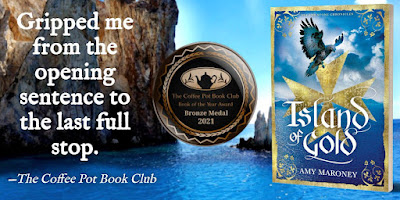One of the wonderful things about writing historical fiction is researching centuries-old traditions. When I realized I needed a Christmas feast scene set in the 15th-century south of France for my historical suspense novel Island of Gold, I happily lost myself in research about this delectable topic. I imagined tables laden with rich foods, processions, dancing, singing, Yule logs . . . essentially, a version of today’s Christmas without the relentless commercialization of the holiday we now experience.
 |
| Photo by Annie Spratt via Unsplash |
For those who could afford it (and not many could), Christmas celebrations in medieval and Renaissance-era France were elaborate affairs. The celebrating was spread out over the “twelve days of Christmas”, beginning Christmas Eve, the 24th of December, and ending on the Twelfth Day, Epiphany (January 6th).
 |
| Nativity illumination. Photo by e-codices, license: https://creativecommons.org/licenses/by-nc/2.0/ |
Church celebrations during this time added extra songs, dialogue, and “cast members” to services, eventually resulting in Nativity plays and elaborate choir performances. The Feast of the Holy Innocents (December 28) featured role-reversal, with choir boys conducting services and leading processions. On January 1, the Feast of the Fool, French clergy would poke fun at themselves with such antics as wearing their clothes inside out, leading donkeys into church, and burning incense made from shoe leather. Though this tradition was phased out by the Catholic Church during the 15th century, it caught on in the secular world and made for much merriment during the Christmas feast days.
In Island of Gold, my characters Sophie and Cédric inhabited a world of wealthy merchants and landed nobility. I imagined them in a festive holiday world scented with evergreen wreaths, spices, and delicious food. In this world, homes were elaborately decorated with festive greens, holly wreaths, costly beeswax candles, mistletoe rings, and other décor. Tables were laid with special linens, finger-washing bowls filled with herb- and flower-infused water, and silver salt cellars, knives, and spoons.
Typical feast foods during this lavish season included roast pig, veal, venison, crayfish, soups, jellied meats, tartlets, pies featuring chickens, pigeons, and rabbit, and more. If the budget allowed, whole swans or peacocks were roasted with their tail feathers intact.
 |
| Photo public domain from Wikipedia |
Dessert was equally elaborate, featuring fruit custards, pastries, nuts, cheese, and luxury fruits like oranges, figs, and dates. Entremets—served before the dessert course—were small nibbles glazed with sugar and honey. Red and white wines were served, often spiced and sweetened.
In the hearth, an enormous Yule log would burn for the entire 12 days of Christmas.
Musicians and performers were employed to entertain the revelers. Everyone sang, danced, ate, and drank to their hearts’ content. They exchanged gifts and played cards and dice, plus board games like chess, checkers, and backgammon.
For the grand finale on Twelfth Night, celebrants played the “King of the Bean” game (in French, “Le fête du Roi”). Whoever found the hidden bean in the bread or special cake was king or queen of the feast, and could order everyone at the table around. In Island of Gold, my character Sophie Portier finds the bean and is thrilled to become queen for the night.
 |
| Dance With Musicians photo. Source: public domain. |
Sophie chooses to play a related game that evening, “The king/queen who does not lie”, when the monarch of the feast night asks questions of any guest. If the answer is given truthfully, the guest is allowed to ask the king or queen a question in return—a perfect way to showcase Sophie’s boldness and put her on the spot in front of a household of guests.
Having lived in France myself, I am a big fan of “le gallette des rois”, the traditional cake served with a hidden “bean” (nowadays a porcelain figurine or some other charm). A local French bakery in my area creates these once-a-year treats and my family often indulges in this delicious, memorable ritual.
Here’s to holiday feasts and beloved traditions everywhere. May your festive season be bright and merry!
1454. A noble French falconer. A spirited merchant's daughter. And a fateful decision that changes their destiny forever...
When Cédric is recruited by the Knights Hospitaller to the Greek island of Rhodes, his wife Sophie jumps at the chance to improve their fortunes. After a harrowing journey to Rhodes, Cédric plunges into the world of the knights—while Sophie is tempted by the endless riches that flow into the bustling harbor. But their dazzling new home has a dark side.
Slaves toil ceaselessly to fortify the city walls, and rumors of a coming attack by the Ottoman Turks swirl in the streets. Desperate to gain favor with the knights and secure his position, Cédric navigates a treacherous web of shadowy alliances. Meanwhile, Sophie secretly engineers a bold plan to keep their children safe. As the trust between them frays, enemies close in—and when disaster strikes the island, the dangers of their new world become terrifyingly real.
With this richly-told story of adventure, treachery, and the redeeming power of love, Amy Maroney brings a mesmerizing and forgotten world to vivid life.
Amy Maroney studied English Literature at Boston University and worked for many years as a writer and editor of nonfiction. She lives in Oregon, U.S.A. with her family.
When she’s not diving down research rabbit holes, she enjoys hiking, dancing, traveling, and reading. Amy is the author of The Miramonde Series, an Amazon-bestselling historical mystery trilogy about a Renaissance-era female artist and the modern-day scholar on her trail.
Amy’s award-winning historical adventure/romance series, Sea and Stone Chronicles, is set in medieval Rhodes and Cyprus. An enthusiastic advocate for independent publishing, Amy is a member of the Alliance of Independent Authors and the Historical Novel Society.







Thank you for hosting me, Cathie! Cédric and Sophie thank you, too.
ReplyDeleteMy pleasure, Amy. It's of particular interest as I live in France, and have partaken in the galette des rois with former neighbours! :-)
Delete